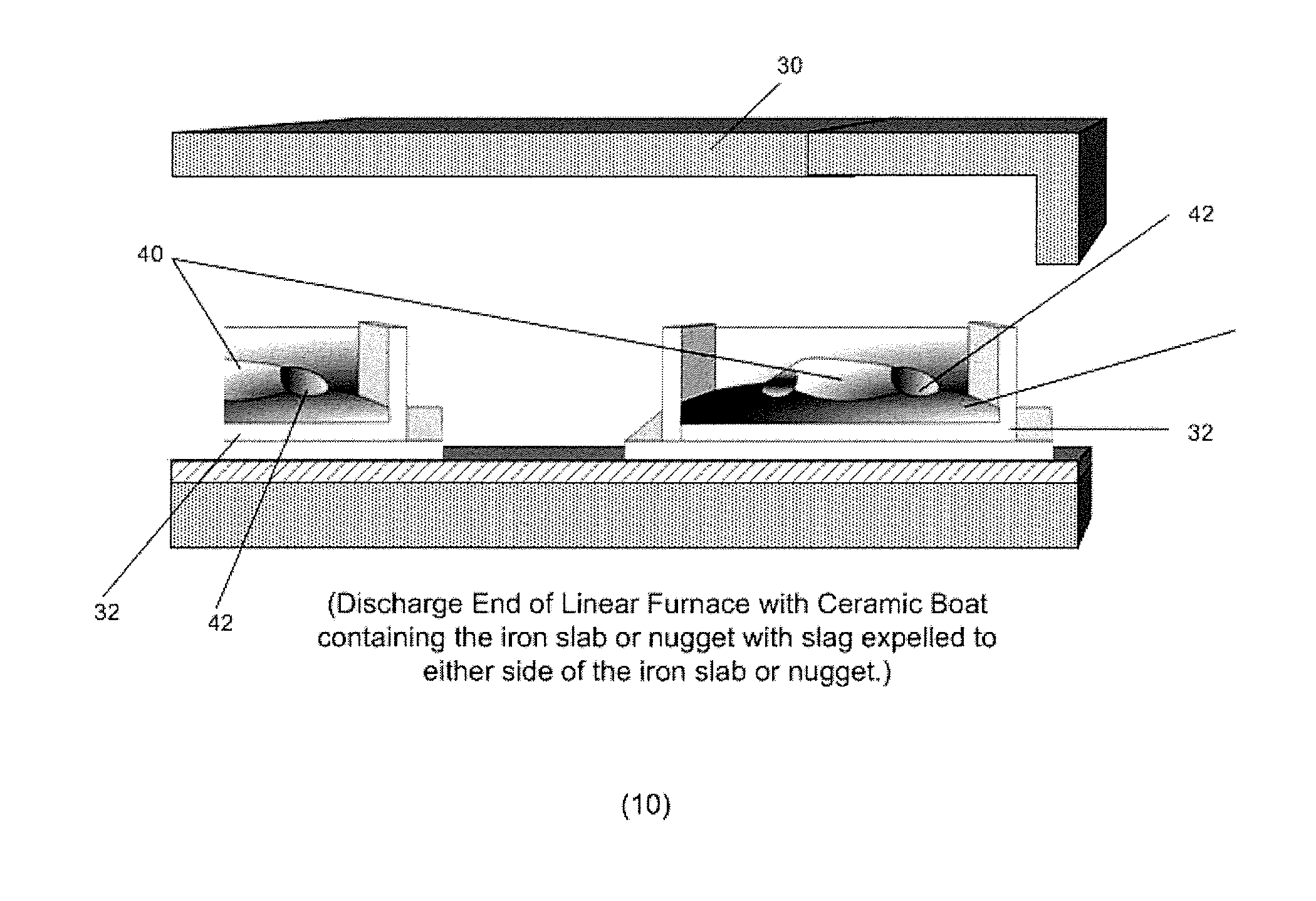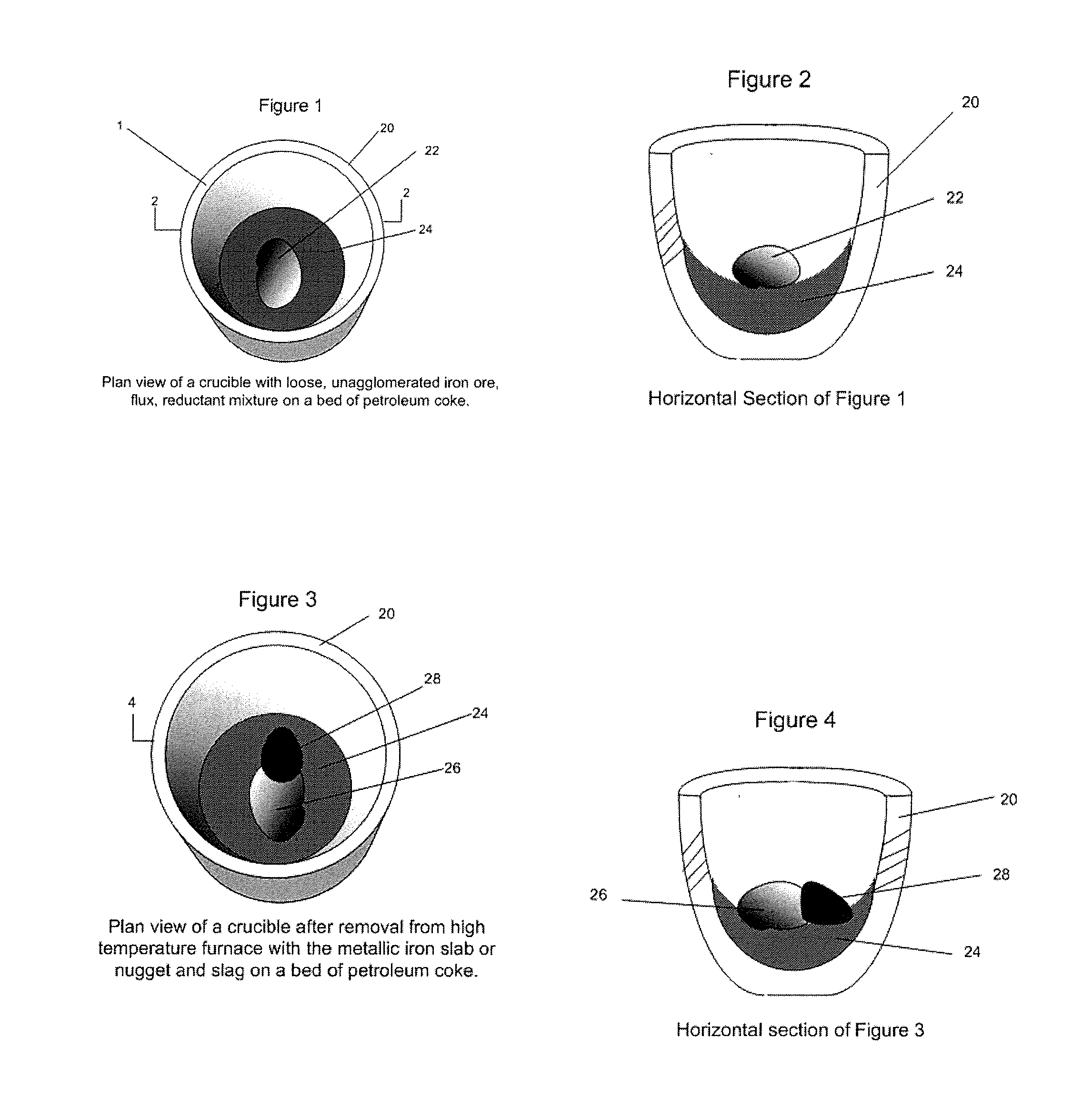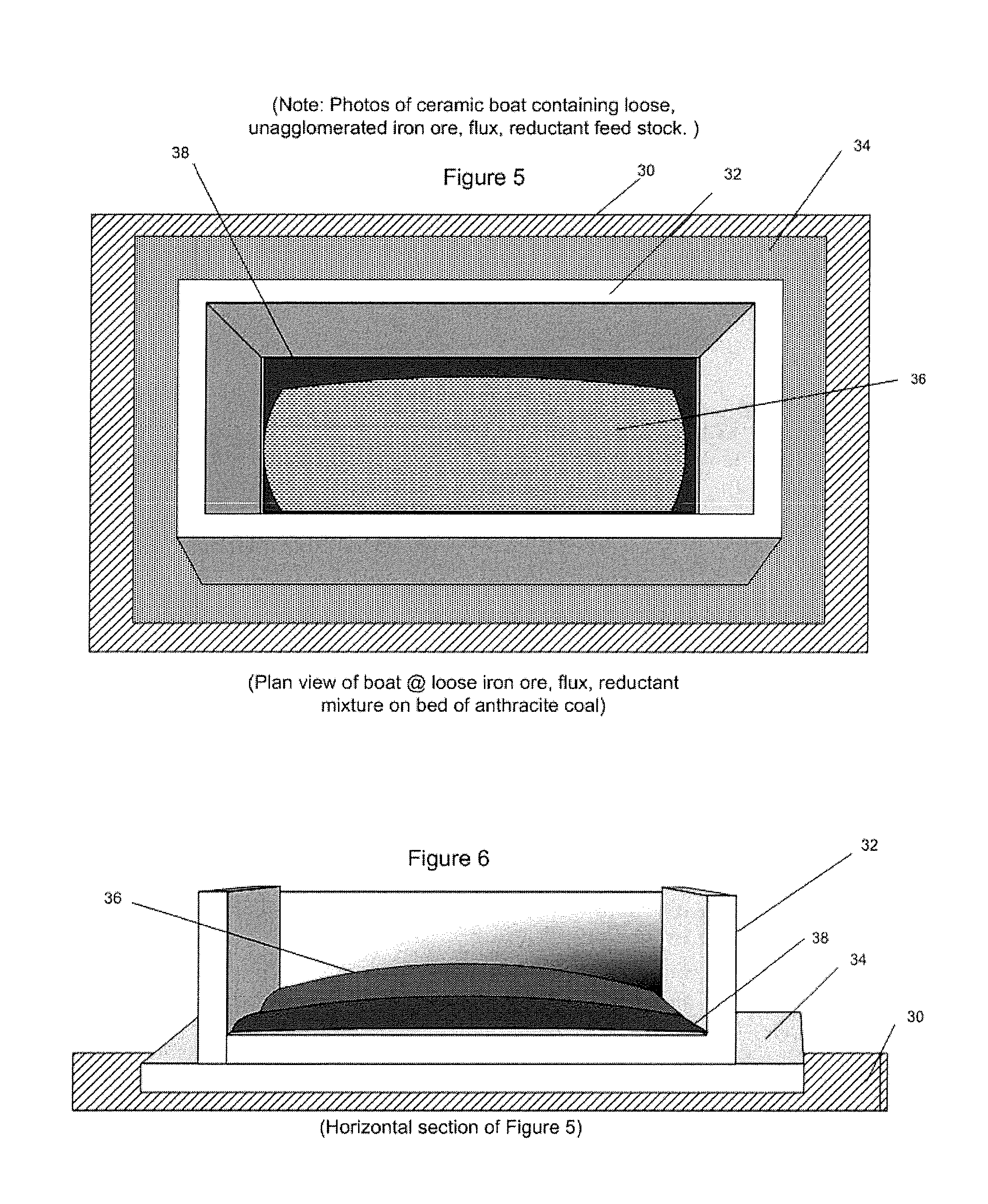Direct Production of Iron Slabs and Nuggets From Ore Without Pelletizing or Briquetting
a technology of iron ore and nuggets, which is applied in the direction of furnaces, metal processing, furnace types, etc., can solve the problems of increasing the cost, efficiency and complexity of this operation, and the current practice does not provide a direct reduction process, so as to reduce the capital and operating costs of the plant, and achieve high quality
- Summary
- Abstract
- Description
- Claims
- Application Information
AI Technical Summary
Benefits of technology
Problems solved by technology
Method used
Image
Examples
example 1
[0076]A fluxed (limestone / dolomite) iron ore concentrate from the Minorca mine, Hibbing, Minn., consisting of particles 90% passing a 25 micrometer screen and consisting of 65% iron and 4.5% silica before fluxing, was mixed with 60×0 mesh dried, ground hard wood. No binder was added. The fluxed iron concentrate and ground wood were weighed and mixed together in a kneader-mixer with no moisture added. The loose, un-agglomerated mixture contained about 70% concentrate and 30% wood reductant. The loose mixture was placed in a claygraphite, oxide crucible as shown in FIGS. 1 and 2 containing a refractory supporting base consisting of petroleum coke which held and supported the loose mixture. The loose material was fired at a temperature of 1490° C. for 10 minutes. After cooling, the metallic iron slab that was produced was easily separated from the adhering slag. The metallic iron slab had an apparent density (gm / cm3) of 7.41. The results of this test are contained in Table No. 1.
[0077]...
example 2
[0078]Metallic iron was produced from fluxed magnetite concentrates as in Example 1, except that 60×0 mesh dried softwood was used as the reductant in place of the hardwood. The loose material was fired for 10 minutes at 1490° C. The metallic iron slab that was produced after being separated from the slag had an apparent density (gm / cm3) of 7.32. The results of this test are contained in Table No. 2.
example 3
[0079]Metallic iron was produced from fluxed magnetite concentrate that assayed 65% iron 4.5% silica before fluxing, mixed with dried sugar beet waste as the reductant. The mixed blend was placed on a bed of petroleum coke in the furnace in the form of a loose powder. The sample was fired at a temperature of 1490° C. for a residence time of 10 minutes. A metallic iron slab was produced with an apparent density of 6.67 (gm / cm3). The results of this test are contained in Table No. 3.
PUM
| Property | Measurement | Unit |
|---|---|---|
| temperature | aaaaa | aaaaa |
| temperature | aaaaa | aaaaa |
| temperature | aaaaa | aaaaa |
Abstract
Description
Claims
Application Information
 Login to View More
Login to View More - R&D
- Intellectual Property
- Life Sciences
- Materials
- Tech Scout
- Unparalleled Data Quality
- Higher Quality Content
- 60% Fewer Hallucinations
Browse by: Latest US Patents, China's latest patents, Technical Efficacy Thesaurus, Application Domain, Technology Topic, Popular Technical Reports.
© 2025 PatSnap. All rights reserved.Legal|Privacy policy|Modern Slavery Act Transparency Statement|Sitemap|About US| Contact US: help@patsnap.com



